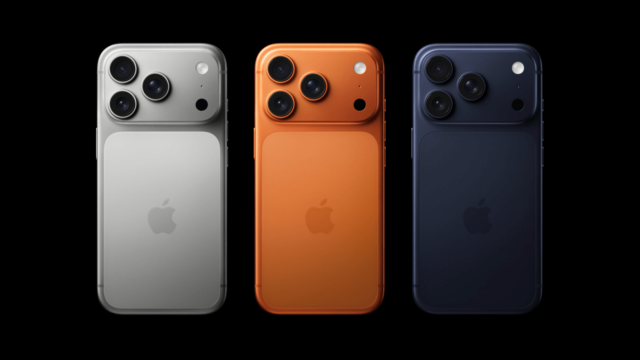Brain-computer interfaces have now become real technologies tested in laboratories, beyond science fiction movies. Research centers around the world are developing devices that directly convert human thoughts into digital signals.
The point this technology has reached shows that mind-reading fantasies may become reality in the near future. Considering the current rate of progress, basic mind-machine interaction may enter our daily lives in the 2030s.
Mind-reading devices may enter our lives after 2030!
Neuralink, the company founded by Elon Musk, is one of the most ambitious projects in this field. The company succeeded in implanting chips in its first human subjects in 2024. A paralyzed patient named Noland Arbaugh can play computer games and write messages with the chip implanted in his brain.

The chip captures electrical signals from the motor cortex and converts the patient’s intention to move into algorithms. This success shows that invasive brain interfaces are no longer in the experimental stage.
Facebook’s Meta company is developing mind-reading technology with non-invasive methods. The company’s CTRL-Labs unit captures nerve signals with wristband-shaped devices. This system detects the user’s thinking about finger movements, allowing the use of a virtual keyboard. The device, which is planned to be released in 2025, could be the first commercial brain-computer interface for daily use.
The BrainWave project, developed in partnership with Microsoft and Intel, analyzes brain signals with machine learning algorithms. The system can measure the user’s attention and mental load by processing electroencephalography data in real time. This technology has been used especially in the education sector to improve student performance.
Germany’s Max Planck Institute has made a breakthrough in mind reading with functional magnetic resonance imaging technology. Researchers have developed an algorithm that can predict the images passing through people’s minds with 80 percent accuracy. The system can determine what the person is thinking about by analyzing blood flow changes from the visual cortex.
The École Polytechnique Fédérale de Lausanne in Switzerland has developed a system that converts the thoughts of paralyzed patients into text. When patients think about writing letters, the activity in their motor cortex changes. The algorithm learns these changes and produces text at a speed of 90 characters per minute. This speed is 75 percent of normal typing speed.
Synchron has developed a chip implantation technology using an intravenous method. The device, called Stentrode, reaches the motor cortex via blood vessels without requiring brain surgery. This system, which has received FDA approval, is being tested on ALS patients. Patients can check their social media accounts and send messages with their thoughts.
Japan’s ATR Neurocommunication Laboratory has made progress in reconstructing mental images. With deep learning algorithms, they have managed to visualize the scenes people see in their dreams. The system can analyze data collected from brain scans during sleep and predict dream content.
The BrainGate project at Brown University is conducting long-term tests on paralyzed patients. A patient named Nathan Copeland has been living with a chip in his brain for 8 years and can control a robotic arm. The system learns over time and begins to perceive the patient’s intentions more accurately. These results prove the long-term safety of the implant.
China’s Tsinghua University has developed non-invasive EEG-based software. Users can play computer games with their thoughts and give simple commands. The system detects user intentions by analyzing changes in beta and alpha brain waves. In 2024, they achieved an 85 percent success rate in a test group of 10,000 people.
Kernel has developed a helmet that measures brain activity in real time. The device uses laser technology to monitor cerebral blood flow and analyze cognitive status. The system, which is used for early diagnosis in Alzheimer’s and dementia patients, can detect the early stages of the disease.
Carnegie Mellon University has increased the accuracy of mind reading with machine learning. Researchers have mapped the activation patterns of different words in the brain. The system can predict the word a person is thinking with 87 percent accuracy. This technology offers hope for patients with language disorders.
Technical challenges still pose major obstacles. Brain signals are extremely complex and vary from person to person. The same thought creates different signal patterns in different people. Noise filtering, signal processing and machine learning algorithms need to be continuously improved.
The issue of biocompatibility is critical in invasive methods. Chips can cause inflammation in brain tissue and signal quality can decrease over time. In the field of materials science, implants that do not harm brain tissue and have a long life are being developed. Flexible electronics ve biocompatible coatings are promising in this regard.
Data processing capacity may be insufficient for real-time mind reading. The human brain performs trillions of calculations per second, and processing this information requires powerful computers. Quantum computers and neuromorphic chips may solve this problem in the future.
Ethical concerns may slow down the development of technology. Mental privacy, consciousness manipulation, and freedom of thought are being discussed. It should be determined which thoughts can be read, how this information will be protected, and with whom it will be shared. International regulations and ethical standards need to be developed.
Medical applications are the area where technology is being adopted most rapidly. Systems are being developed for early detection of epileptic seizures, treatment of depression, and rehabilitation of stroke patients. The FDA and similar organizations are accelerating the approval processes for medical brain interfaces.
Military applications are also a subject of research. The Pentagon’s DARPA unit is developing mind-controlled systems for soldiers. The aim is to increase performance by monitoring the mental states of pilots and operators. However, these applications are causing ethical discussions.
Commercial market potential is growing rapidly. According to a McKinsey report, the brain-computer interface market could reach $27 billion by 2030. Technology companies, the gaming industry, and the medical sector are making major investments in this area.
Future predictions are optimistic. Simple command giving and text writing could become widespread in 2027-2028. Complex thought reading and memory access could be possible between 2035-2040. Full mind-machine integration could occur after the 2050s.
Hybrid systems are the fastest developing area. The combination of EEG, EMG, and eye tracking technologies provides performance close to invasive methods. These systems can be adopted faster because they do not carry surgical risks.
Mind-reading devices are no longer a dream, but a developing reality. If the current pace of technological advancement continues, basic mind-machine interaction could become part of our daily lives in the next decade. This revolution will fundamentally change the human-technology relationship and open the doors to a new era.













